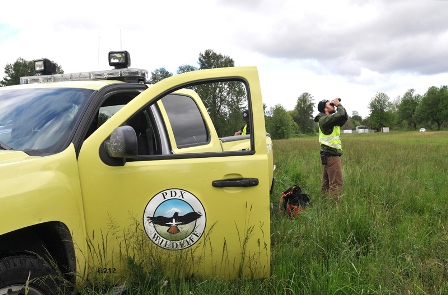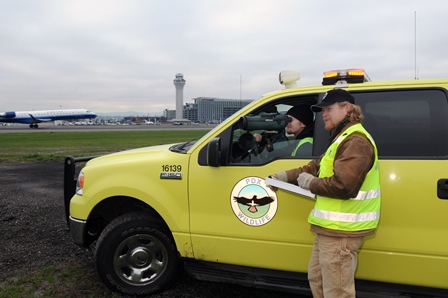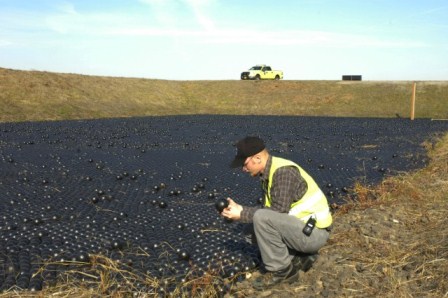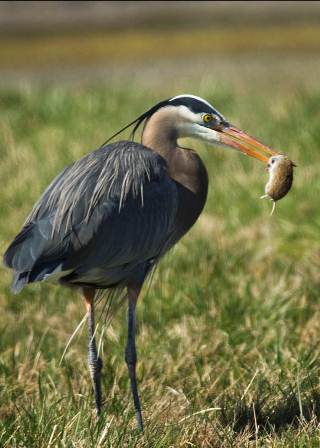



The presence of some birds actually helps support the program. Six resident red-tailed hawk pairs occupy their own niche on airport property. These raptors keep other species of birds away and many of them are savvy enough to thrive in the busy airport environment. A few hawks have been documented living at the airport for over 14 years. The wildlife management team also traps and relocates hundreds of raptors and performs nest interventions when needed. Since 1999, over 1,200 red-tailed hawks have been relocated to 25 different sites. Captured fledglings are sent to the Audubon Society of Portland’s flight cages on Sauvie Island, where they learn to fly and hunt before they are released back into the wild, away from PDX.

The team conducts research to help manage prey on airport property and determine the best methods for keeping their populations in check. The most prolific sources of food are grasshoppers, grey-tailed voles and earthworms. The team conducts grasshopper surveys and recently began testing a new type of turf grass that requires less frequent mowing. Grasshoppers are often stirred up during mowing, attracting predators and requiring careful coordination with flight activity.

Though bird strikes do still occur at PDX, the wildlife management team carefully investigates and tracks data to continuously improve the program. For the most challenging investigations, the program relies on the prestigious Smithsonian Institute’s Feather Identification Lab, which offers precise DNA matching.
